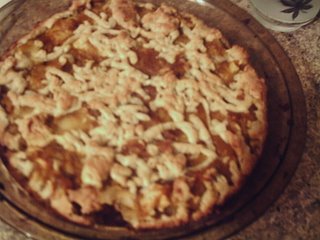 Reader, I made the most delicious soup last week. Now, I’ve been making soup quite often for the past couple of months. I once weakly complained about having to eat soup every day when I was a kid, but I really didn’t mind that at all. I love soup and would happily eat it daily for lunch and dinner, as long as I could have some nice bread and cheese on the side.
Reader, I made the most delicious soup last week. Now, I’ve been making soup quite often for the past couple of months. I once weakly complained about having to eat soup every day when I was a kid, but I really didn’t mind that at all. I love soup and would happily eat it daily for lunch and dinner, as long as I could have some nice bread and cheese on the side.The soups I’ve been cooking lately are semi-vegetarian, pureed concoctions. These soups are new to me--creamy vegetable soups aren’t the soups I grew up with. No, soup at home was always a chunky and meaty affair. Now that I’m living on my own, soup-making more often involves chicken stock and a blender rather than marrow bones and beef chuck. But I am not giving up on the soups of my childhood. After a round of creamy tomato and butternut squash soups, I’m back to my all-time favorite: tomato bean soup, full of rich, satisfying, stick-to-your-ribs goodness. Don’t bother serving a crisp, green salad on the side. Offer some hearty, buttered bread instead, and watch your guests slurp this stuff until they are pink-faced and sated.
I wrote up a recipe last year, but I always toy around with the basic formula. This time I added some smoked kielbasa, with excellent results.
Method: Soak a cup of navy beans in 3-4 cups of water overnight. Place the beans in a pot with 4-5 cups of water and bring to a boil, then lower the heat to a simmer. Cook until the beans are soft—60 to 90 minutes. Reserve a cup or two of the water.
Slice about ½ pound of sausage or kielbasa into rounds, heat some olive oil in a Dutch oven and saute the sausage until it is golden on both sides. I used Polish kielbasa from the Russian store, but you can use whatever sausage you like. Take the sausage out of the pot and set aside.
When the beans are close to done, heat up a little more olive oil in the Dutch oven and saute a large onion and two medium carrots until the onion is soft and golden. Add three minced garlic cloves and saute for a couple more minutes. Add the beans, two medium peeled, diced potatoes, a bay leaf and five cups of chicken stock.
Bring the whole thing to a boil, and then lower the heat to a simmer. When the potatoes are nearly tender, add a 14-oz can of good, whole tomatoes. Break them up into chunks with a spoon. Stir in a little brown sugar (this depends on acidity of the tomatoes and personal taste—I like about a tablespoon of sugar); a tablespoon of sweet paprika; a pinch of hot red pepper flakes or a dried, hot chili pepper; and salt to taste. Simmer for 30 minutes. Just before serving, stir in the sausage. Sprinkle with fresh parsley. If the soup is too thick the next day, add more stock or some bean cooking water.






